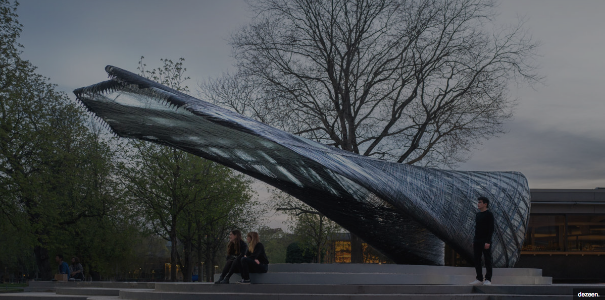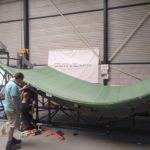A team of flying drones and stationary machines have built a moth-inspired pavilion at Germany’s University of Stuttgart. The lightweight pavilion, designed by a team of architects, engineers and biologists, is a cantilevering structure named ICD/ITKE Research Pavilion 2016-17, and is made out of over 110 miles (177 kilometers) of resin-impregnated glass and carbon fibre. It measures 12 meters (40 feet) long.
Inspired by the silk hammocks woven by moth larvae, the biomimetic pavilion replicates a process used by the larvae of two species of leaf-minor moths the spin silk hammocks between two leaves. Two stationary machines were stationed at the far ends of the pavilion, while the drones passed the fiber between the two stations, all while communicating via an integrated sensor interface.
According to the team, the use of the lightweight fiber composites is key to the success of the project – although its prohibitive price is the reason that this type of building will not likely be accessible for mainstream building. “Within architectural scale production,” the Stuttgart team told dezeen, “where material self-weight is of high concern for larger-span structures, lightweight fiber composites provide unparalleled performance.” They added: “We currently lack adequate fibre-composite fabrication processes to produce at this scale without compromising the design freedom and system adaptability required for the architecture and design industries.”
The moth-inspired pavilion is the latest in the University of Stuttgart’s annual biomimetic pavilion series.













